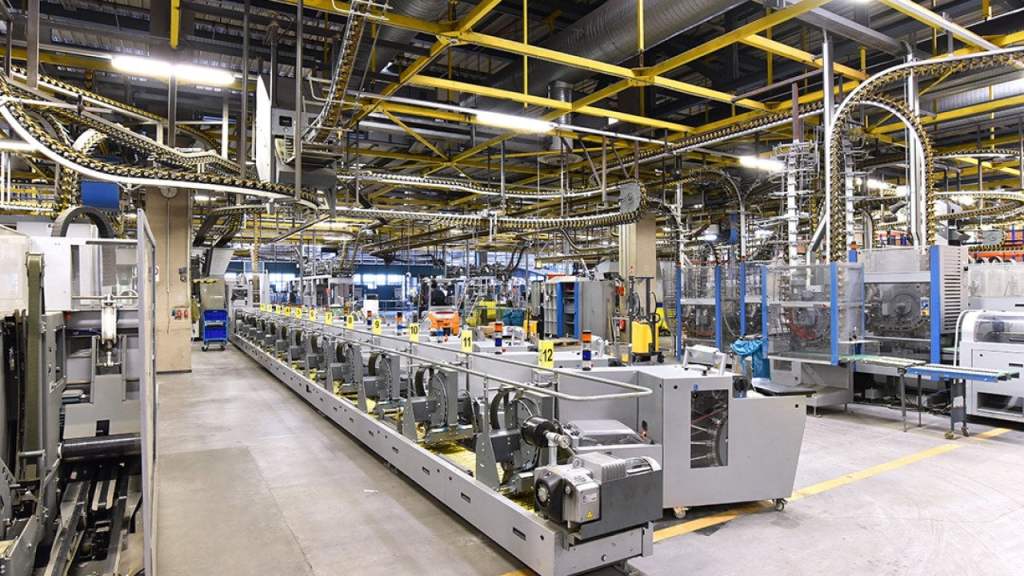Summer business energy strategies to impact your bottom line
Published 2:00 pm Monday, June 23, 2025
Summer business energy strategies to impact your bottom line
For many businesses, managing energy costs can be a challenge, especially during the summer months. Understanding peak load contribution (PLC) and the strategies it entails can unlock significant savings on electricity bills, and more importantly, provide a competitive edge in energy (and energy cost) management. In this guide, Shipley Energy explains the key concepts of PLC and explores strategies your business can implement to mitigate these costs while ensuring you remain operationally efficient.
What is peak load contribution?
PLC refers to your business’ share of energy use during the highest demand periods on the electricity grid—usually on the hottest days of summer. Utilities use this figure to calculate your portion of capacity charges, which are a major part of your total electricity costs. In essence, the higher your energy use during these peak periods, the larger your share of the grid’s maintenance and operational costs, and the higher your bills are for the next 12 months.
So why does this matter? For businesses, since capacity costs are measured in dollars per megawatt day, reducing energy consumption during these peak times can translate to lower capacity charges, which can have a substantial impact on your bottom line.
How is peak load contribution determined?
Utility companies measure your energy usage during peak hours—typically across five peak days during the year when the grid is most strained. These days are often driven by extreme weather or high-demand periods, and are determined by regional transmission organizations such as PJM Interconnection, which manages much of the mid-Atlantic region.
If your business uses a significant amount of electricity during these peak events, it contributes more to the overall load, and your capacity charges will be higher. The key to mitigating this is managing and reducing energy usage during these critical times.

Shipley Energy
Strategies for mitigating PLC and reducing energy costs
Participate in demand response programs
One of the easiest ways to mitigate PLC is by participating in utility-sponsored demand response programs. These programs offer financial incentives to businesses that reduce their energy usage during peak periods. By temporarily scaling back nonessential operations or shifting energy-intensive processes to nonpeak hours, you can not only reduce your PLC but also receive direct compensation for doing so.
Shift energy usage to off-peak times
Load shifting is another effective strategy. This involves rescheduling high-energy-consuming activities, like production or heavy machinery operation, to times when the grid is under less stress. For many businesses, this may involve adjusting work schedules or automating processes to occur overnight or early in the morning. Load shifting can significantly reduce your energy demand during peak periods, cutting down your PLC and, by extension, your capacity charges. Heavy heating or cooling of buildings can also be shifted preemptively so that usage is lowered during peak periods. Obviously, any usage that is critical to the financial well-being of your business shouldn’t be shifted without a full financial analysis of the impacts and potential savings.
Leverage energy storage solutions
Investing in energy storage systems, such as batteries, can help your business store energy during off-peak times and use it during peak hours. This not only shields you from high peak demand rates but also offers a layer of protection against power outages. While energy storage can involve an upfront investment, the long-term savings in PLC reduction and operational uptime may make it a worthwhile consideration.

Shipley Energy
Utilize on-site generation
Another option for reducing your reliance on the grid during peak times is through on-site generation. This can include solar panels, wind turbines, or natural gas generators that produce energy for your facility. During peak times, your business can draw from these sources, reducing the need to pull from the grid and lowering your PLC. While this requires significant planning and initial capital, it can offer both cost savings and sustainability benefits.
Implement energy efficiency measures
Lastly, improving your business’s overall energy efficiency can reduce your PLC indirectly. By upgrading lighting, HVAC systems, and insulation, you reduce the overall amount of energy your facility uses throughout the year. These improvements also make it easier to manage your energy use during peak times, making PLC mitigation part of a broader energy strategy.
The financial impact of PLC mitigation
The potential savings from PLC mitigation are significant. Lowering your PLC means lower capacity charges, which can account for 10%-30% of your total electricity bill.
Moreover, while the upfront investment in energy storage, on-site generation, or efficiency upgrades may seem daunting, the long-term return on investment can make these measures highly profitable. Energy storage systems, for example, not only help with PLC mitigation but also provide resilience against power outages.
Effectively managing your PLC requires more than just tracking energy usage—it demands a comprehensive approach that blends technology, strategic planning, and expert guidance.
Physical solutions to reduce load
- LED lighting: Switch to high-efficiency LED lighting to significantly cut down on your facility’s baseline energy usage.
- High-efficiency air conditioning: Upgrade to energy-efficient HVAC systems that consume less power during both peak and non-peak hours.
- Variable speed motor drives: Install variable speed drives on equipment to adjust energy output to match operational demands, ensuring your machinery only uses what it needs when it needs it.
- Remotely controlled HVAC systems: Implement smart, remote-controlled HVAC systems that allow you to adjust temperatures during peak periods without compromising comfort or productivity.
By making these physical upgrades, businesses can see immediate reductions in energy consumption, which directly lowers PLC and overall operating costs.

Shipley Energy
Who benefits the most from peak load contribution mitigation?
While all businesses can benefit from managing their PLC, certain industries and organizations are particularly impacted by high energy demand and capacity charges. Here’s a look at the types of businesses where PLC mitigation can have the most significant impact.

Shipley Energy
1. Manufacturing facilities
Manufacturing facilities are often among the largest energy consumers, with heavy machinery, production lines, and climate control systems running at full capacity. A single manufacturing plant can see its energy bills skyrocket during peak periods, making PLC management crucial. By adopting energy-efficient equipment, like variable speed motor drives and high-efficiency HVAC systems, manufacturers can reduce their peak demand. Additionally, strategic load shifting, such as moving energy-intensive processes to nonpeak hours, can dramatically lower PLC.
Example: A metal fabrication plant that adjusts its production schedule to run energy-heavy processes overnight, using smart systems to monitor and control energy use during the day, could reduce its PLC by 15%, leading to significant savings on energy bills while maintaining production targets.
2. Municipal water treatment plants
Water treatment facilities are essential operations that consume large amounts of energy, particularly during pumping and treatment cycles. These facilities often have limited flexibility to shift their energy use, but smart strategies like demand response programs and energy storage solutions can help. By implementing remote-controlled systems to reduce nonessential power consumption during peak events, municipalities can cut energy costs without compromising service.
Example: A water treatment plant that integrates an on-site energy storage system and begins participating in a demand response program. By storing energy during off-peak times and drawing from the storage during peak demand periods, the facility could reduce its PLC and see a 10% decrease in its annual energy expenses.
3. Commercial real estate and office buildings
For office buildings, especially those with large HVAC and lighting systems, energy consumption tends to peak during regular business hours. Facilities managers can utilize real-time monitoring and automated HVAC systems to reduce load during peak times. Simple actions like adjusting the thermostat and dimming lights during peak events can significantly lower energy usage and mitigate PLC costs.
4. Data centers
Data centers, with their extensive use of servers and cooling systems, are constant energy consumers. PLC mitigation is critical for these operations, where uptime is nonnegotiable. Strategies such as load shifting, energy-efficient cooling, and on-site renewable generation can help reduce peak demand without affecting data center reliability.
5. Large retail operations
Retailers, especially large chains or shopping malls, tend to have predictable peak hours. Energy-saving initiatives like LED lighting and smart building systems can help them cut back on energy use during peak periods without impacting customer experience. Additionally, demand response programs can provide a source of income by reducing nonessential operations during grid stress.
Why peak load contribution mitigation matters
For these types of organizations, effective PLC management goes beyond just lowering energy bills—it enhances operational resilience, reduces environmental impact, and ensures compliance with local and regional energy regulations. Businesses in these sectors can tailor their energy management strategies to meet their unique operational demands while controlling energy costs.
This story was produced by Shipley Energy and reviewed and distributed by Stacker.
![]()






